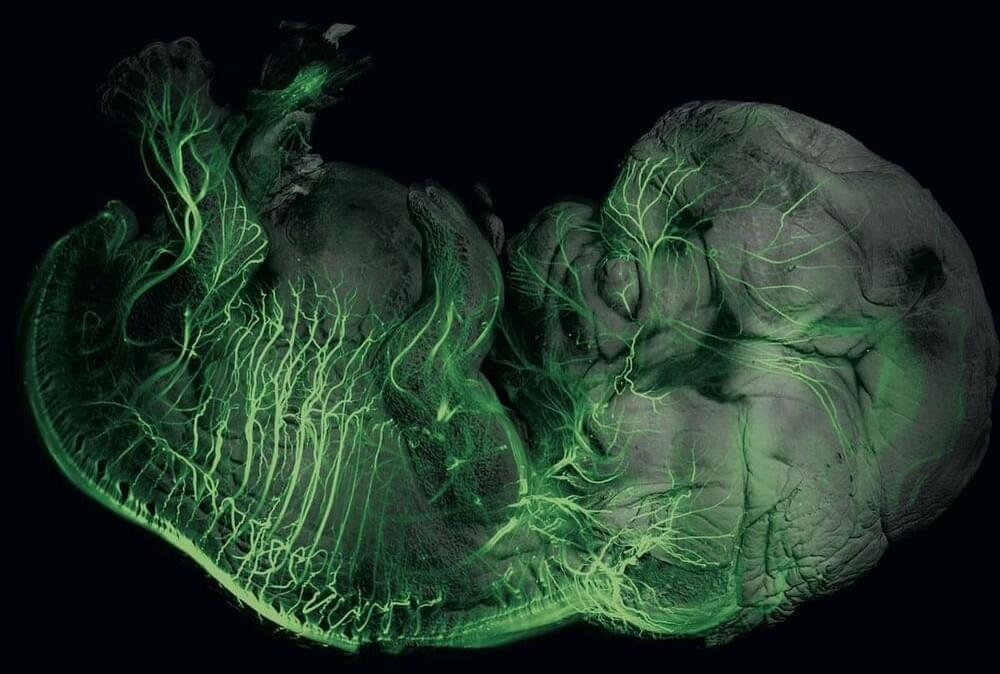Map shows Europe’s imminent Great Leap Forward in battery cell production.


Explore the latest breakthroughs in science with us! From the mind-boggling discovery of the Big Ring in space to revolutionary advancements in battery technology, get ready to be amazed!
Warographics: / @warographics643
MegaProjects: / @megaprojects9649
Into The Shadows: / intotheshadows.
Today I Found Out: / todayifoundout.
Highlight History: / @highlighthistory.
Brain Blaze: / @brainblaze6526
Casual Criminalist: / thecasualcriminalist.
Decoding the Unknown: / @decodingtheunknown2373
Places: / @places302
Astrographics: / @astrographics-ve4yq
Humanoid robots are getting increasingly realistic. From Sophia to BINA48, here are 5 of the most realistic and sophisticated humanoid robots.

WASHINGTON — Sierra Space says it has wrapped up a series of environmental tests of its Dream Chaser cargo spaceplane at a NASA facility in Ohio and is ready to ship the spacecraft to Florida for a launch later this year.
The company announced May 9 that the Dream Chaser spacecraft, named Tenacity, along with its Shooting Star cargo module, completed a series of shock, vibration and thermal vacuum tests in chambers at NASA’s Neil Armstrong Test Facility, the former Plum Brook Station in Ohio.
With the tests now complete, Dream Chaser and Shooting Star are ready to ship to the Kennedy Space Center, where the spacecraft will undergo some additional acoustic and electromagnetic testing. Workers will also complete installation of elements of its thermal protection system as well as do payload integration for its upcoming flight.


Not all magnets are the same. When we think of magnetism, we often think of magnets that stick to a refrigerator’s door. For these types of magnets, the electronic interactions that give rise to magnetism have been understood for around a century, since the early days of quantum mechanics. But there are many different forms of magnetism in nature, and scientists are still discovering the mechanisms that drive them.
Now, physicists from Princeton University have made a major advance in understanding a form of magnetism known as kinetic magnetism, using ultracold atoms bound in an artificial laser-built lattice. Their experiments, chronicled in a paper published in the journal Nature (“Directly imaging spin polarons in a kinetically frustrated Hubbard system”), allowed the researchers to directly image the microscopic object responsible for this magnetism, an unusual type of polaron, or quasiparticle that emerges in an interacting quantum system.
Researchers at Princeton have directly imaged the microscopic origins of a novel type of magnetism. (Image: Max Prichard, Waseem Bakr group at Princeton University)

Two eggs fertilized by two sperm coincided in a uterus and, instead of giving rise to two sisters, they fused to form a single person: Karen Keegan. When she was 52 years old, this woman from Boston suffered very serious kidney failure, but luckily she had three children willing to donate a kidney to her. The doctors did genetic tests to see which offspring was most compatible and they got a major surprise: the test said that two of them were not her children. The reality was even more astonishing: Karen Keegan had two different DNA sequences, two genomes, depending on the cell you looked at. Biologist Alfonso Martínez Arias maintains that this chimeric woman is conclusive proof that DNA does not define a person’s identity.
The most inspiring science book of all time is The Selfish Gene, according to a survey carried out by the Royal Society of the United Kingdom. In this famous work from 1976, British biologist Richard Dawkins defended that the DNA molecule uses the human being as a mere envelope in order to be transmitted to the next generation and become immortal. “We are survival machines, robot vehicles blindly programmed to preserve the selfish molecules known as genes,” Dawkins stated. Almost half a century later, Martínez Arias refutes this perspective of the selfish gene and proposes a much more romantic alternative: the altruistic cell. “An organism is the work of cells. Genes merely provide materials for their work,” he says in The Master Builder, a fascinating and provocative book from the London publisher Basic Books that will also be published in Spanish this year.
Martínez Arias, 68, argues that the DNA sequence of an individual is not an instruction manual or a construction plan for their body, but a box of tools and materials for the true architect of life: the cell. The Madrid-born biologist argues that there is nothing in the DNA molecule that explains why the heart is located on the left, why there are five fingers on the hand or why twin brothers have different fingerprints. Cells are what “control time and space,” he proclaims. They are the ones who know where right and left are, and where exactly a person’s foot or an elephant’s trunk should end.

A quantum bit inspired by Schrödinger’s cat can resist making errors for an unprecedentedly long time, which makes it a candidate for building less error-prone quantum computers.

A powerful new idea about how the laws of physics work could bring breakthroughs on everything from quantum gravity to consciousness, says researcher Chiara Marletto

Elon Musk has given an update with an outline for Tesla’s upcoming Full Self-Driving (FSD) software updates.
With FSD v12 and the upcoming launch of Tesla’s dedicated Robotaxi, there’s a lot of excitement around Tesla’s self-driving effort.
Musk is again in the too-familiar position of predicting that the automaker is close to releasing a true self-driving system, but the path to get there is still far from clear.